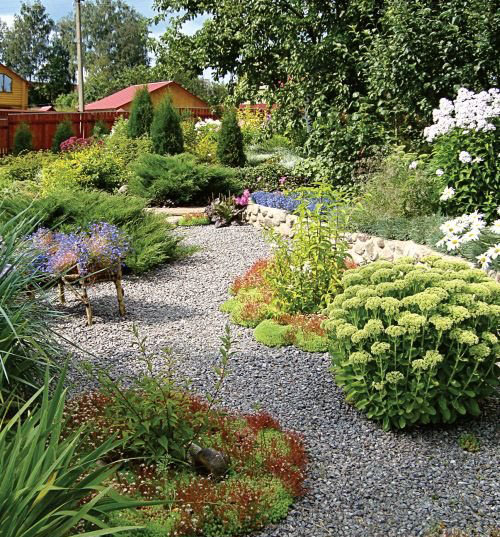Design and paving of paths with paving stones and paving slabs. Paving paths, garden paving plan
10 mistakes in the design and construction of garden paths.
There, on unknown paths ...
How to make tracks not only functional, but also beautiful?
Tired of jumping around the site after a heavy rain, jumping over puddles, trying to reach a bathhouse or a barn? Then you urgently need to make a road-path network. After you have decided on the location of the buildings on the site, now you should think about how the path will go.
Mistake 1. Inconsistency of maintaining the route of the garden path.
Often on the sites you can see the following: you walk, you walk and the path is simply removed into the fence. Why it is needed remains a mystery. First of all, it is worth answering: where should the path lead me? Take your building plan and draw a path with a line based on the number of buildings on the lot. This will show you the goals of your final route.
Mistake 2. Sharp or very large angles when turning the track.
It is not uncommon to observe the following picture: the path goes straight, then turns and then you see a very sharp or large turn. Human psychology is designed in such a way that we unconsciously choose shorter routes.
Not correct: Correct:
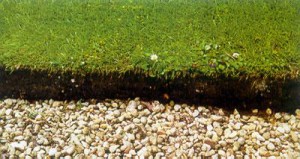

Where it leads? This means that everyone, especially small children, will walk on the lawn and soon bald spots will form there. Yes, and with a garden cart, you are tortured to pass. To prevent this from happening on paper, draw several options for the bends of the track. For now, visually choose the most successful one in your opinion. When incarnating on a site, place wooden stakes and stretch the string.

Before starting to dig a trench, walk along the exposed route. If you feel that somewhere you want to bend more or less, do not be afraid to change the position of the stakes. Until you are satisfied with the result, you should not begin to embody.
Mistake 3. The style and color of the house were not taken into account when choosing the material for the tracks.
If our goal is to create a harmonious and stylish site, this should not be neglected. Sometimes you can observe the following: a bright yellow house is located on the site, and a vigorous purple path approaches it. Looks too aggressive. Or all the buildings on the site are made in different colors.
WRONG: RIGHT:


To prevent this from happening, take this into account in advance. It is better to choose the same material as in the cladding of the house. When choosing a color, be guided by the rule: choose the color of the path as the color of the house, or use a tone darker.
Not only the color is important, but also the material. So for a house in the Russian style, a path made of wooden cuts is suitable, for English, a natural stone or wood. For Italian and Dutch styles: stone, tiles, paving stones.

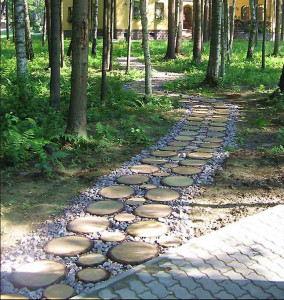
Mistake 4. Inconsistency of the material of the track with its purpose.
Having made a beautiful paving for a parking from tiles, after a short time of operation, the appearance leaves much to be desired? The money has been spent, but the result is zero? It is worth considering in this case, first of all, the functionality of the paving.
Concrete, asphalt and paving stones are perfect for parking. If concrete seems too boring to you, use a stencil with an imitation of natural stone when pouring. This will help you achieve the desired aesthetic effect. Pay attention to the thickness of the coating. So a layer of concrete for a pedestrian path will be sufficient up to 50 mm, for paths along which garden cars will ride up to 75 mm.
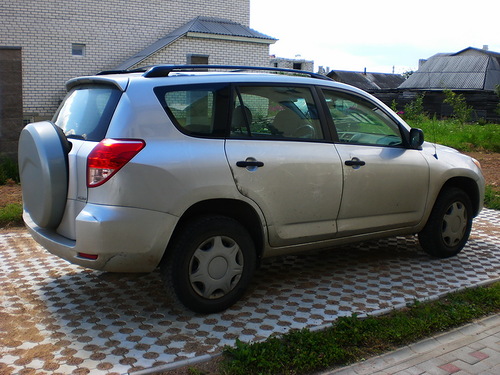
Error 5. Lack of slope at the track.
The rain has passed, and the puddles still remain on the paths? The problem is that you have not foreseen the slope along which the excess water will go away. To avoid this, use the building level when marking the path. Wide access roads and medium-width paths should be paved with a slight incline
(1: 40 or 1: 50), two-sided or one-sided towards the drainage ditches.
Garden paths that connect different areas of the site are also made "humped" or with a slight slope to one side. Long treads made of durable material should slope slightly outward. The ratio should be no more than 1: 100. It is also worth providing drainage to drain excess water.
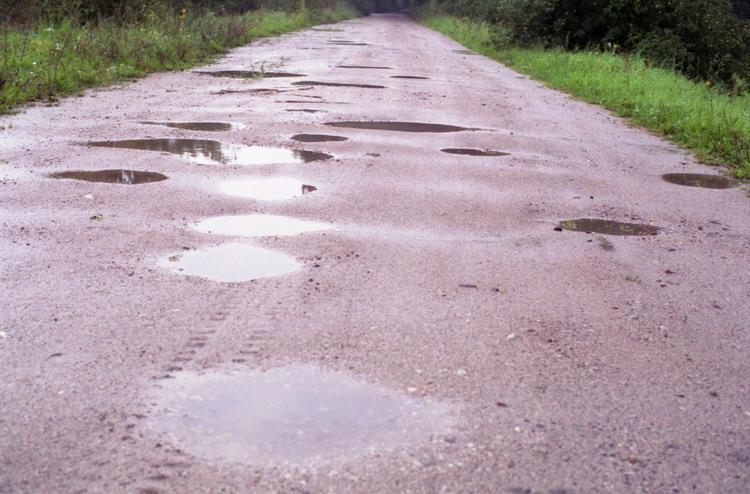
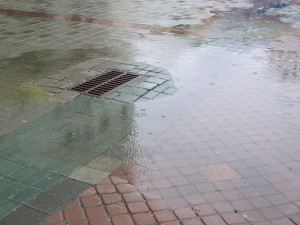
Mistake 6. The track width is not thought out.
Imagine that walking along the path, someone with a garden wheelbarrow is walking towards you. But alas, you cannot disperse, because the width is designed only for 1 person. You will have to go to the lawn, which will not be very comfortable, especially after rain.
To prevent such situations from happening, determine the track width in advance based on its purpose. If it is calculated as a pedestrian, walking path, then 55-75 cm will be enough. provide for parking for 1 space 230cm, and for disabled parking up to 350cm.


Error 7. The relief of the site, soil features and climatic features of the area are not taken into account.
It so happens that after 1 spring the track already needs repair. Somewhere there were cracks, cracks, or some place fell through, forming a hole. If you have heaving, mobile soils, then it is best to choose bulk materials for arranging a track - crushed stone, screenings, gravel, etc.
Also, for arranging tracks on heaving soils, the technology of arranging tracks made of monolithic concrete with a reinforcing strapping is well suited (the reinforcing strapping will prevent cracking of the track surface). It is better to refuse from the device of step paths and from paving stones initially, because they are the most "mobile".
![]()
Mistake 8. The path is much higher or lower than the level of the lawn.
Do you look at the track and you get the impression that it has failed?
Or, on the contrary, what “seemed to fly over the lawn”? The problem is that the design did not take into account the natural topography of the site. As a rule, surveyors are called in to determine such heights and lowlands.
If the area is flat enough, then try to initial stage foresee whether you will import or export soil. Keep in mind that in the future a lawn will grow on the ground, so the ground level can immediately be made 2-3 cm below the level of the path.
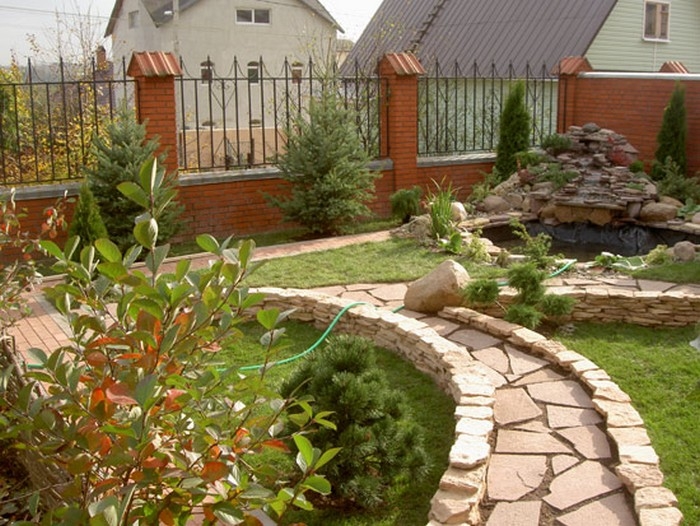
Mistake 9. The close location of the blind area of the house and the garden path.
Of course, this is not always a mistake, and it happens that this is not relevant for all areas. But since this does happen, it is worth considering this moment as well. We make a very small blind area around the house and lay a path nearby. The result is the effect of “butter oil”.
RIGHT WRONG:


We can only plant a lawn, but you are tortured to mow it with a lawn mower on such narrow section... Therefore, it is worth increasing the width of the blind area so that it is convenient for a person to pass. Connect it to the main track, making it blend into the main track.
Error 10. Incorrect calculation of the amount of required material.
Mathematics is the queen of sciences! It's hard to argue. It often happens that while making a track, you realize that there are not enough materials. You come to the market and find that the desired color is no longer there. Redoing everything from the beginning is not an option. Therefore, you have to spend time looking for something similar.
In order not to complicate your life, do not save, and immediately buy the material 20-30 percent more than necessary. On the next year individual fragments may need to be repaired. It is better to secure yourself in advance in this case.
So what needs to be done to properly plan the paths on the site?
1. Take your plan and draw a line for the path. When cornering, try to avoid sharp corners, and vice versa, strongly elongated circles. Achieve the beauty of the line on paper.
2. Place stakes on the site, and pull the rope according to the outlined drawing.
3. Walk along the planned route, understand if everything suits you. If not, rearrange the stakes until you get a suitable result.
4. Calculate the area of the track, calculate the amount of required material. Add 20-30% for unforeseen work.
5. After all preparatory work done, start to embody your plans.
6. Be sure to think about lighting the paths so that you can walk along them without fear in the dark. Especially in winter, when the daylight hours are much shorter. To do this, place small solar-powered lamps, so you can not only illuminate, but also emphasize the beauty of the path.


Take a plan with the outlined buildings and draw paths based on the number of buildings on the site.
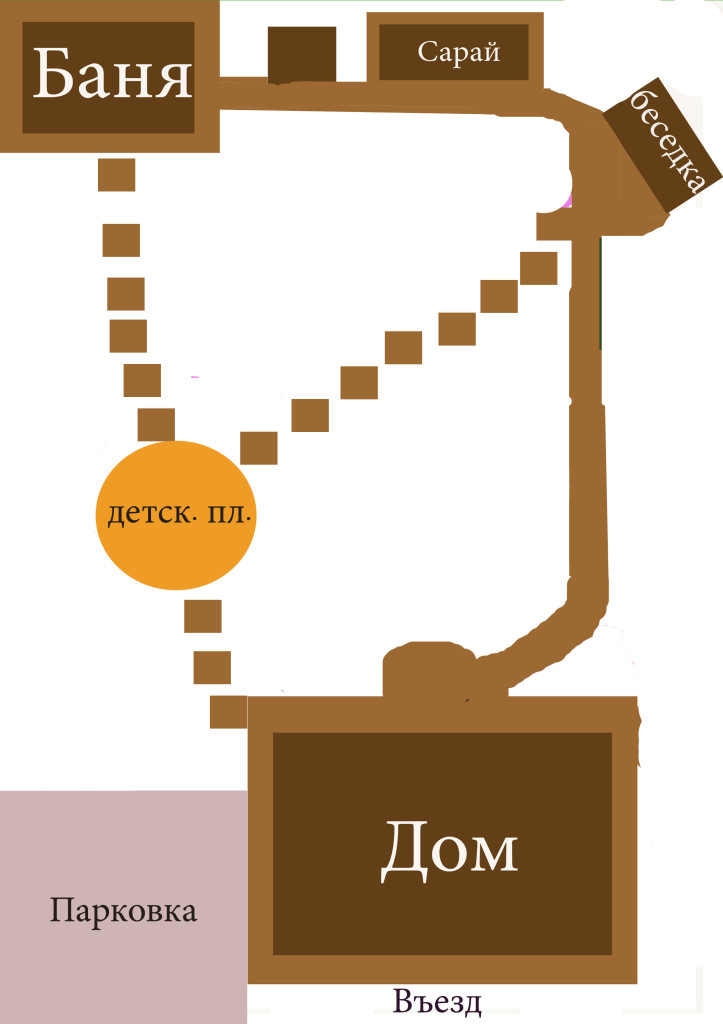
In the next topic, I will cover the principles of creating flower beds and decorative groups.
Write in the comments what type of decorative paving have you chosen? Why did they pick him up?
In addition to the fact that the paths in the garden are designed for the convenience of overcoming its space, the paving of paths also has another function - it creates an original drawing of the garden. The location of the paths and paved areas emphasizes the general landscape style of the site, the color and texture of the house and other buildings. The type of paving of paths is chosen depending on their functional purpose, the general design concept and the preferences of the owner of the garden plot.
Development of a design plan for paving
Studio landscape design"Apple Garden" offers services for designing a paving plan for the site, which includes the calculation of paving areas, a description of the paving materials used.
A paving plan with a description is included in both the basic and extended set of project documentation, but you can order it in separate sheets, which is included in the sheet-by-sheet payment system for our landscape design services.
Every time we drive past construction markets we see endless stands with artificial stone and paving slabs, piles of natural cobblestones and mountains of colored gravel. How do you choose the right paving material for your garden? First of all, you need to consider the size and shape of the garden area. If your site is small in size and has irregular shape then a material that creates texture is suitable for paving, such as clinker bricks or paving stones, cobblestones, pebbles or gravel. If your site has a large area, then you need to use a material such as concrete or stone slabs.
A skillfully selected combination of various types looks modern and original garden paving ... This technique visually enlarges the space and has a positive effect on the artistic perception of the garden as a whole.
When choosing a material, one should take into account the climatic features in the part of the garden where paving is used. You cannot, for example, use a tree in a shady and humid part of the garden, such a path will quickly become unusable, covered with moss and mold. The use of bricks in the wet part of the garden will lead to a decrease in the decorative effect of the material, it will acquire a gray-green color. And monolithic concrete can crack at a sharp temperature drop. To avoid such troubles, entrust the design work paving paths landscape studio professionals.
Types of garden paving paths
"Beautiful stones, like flowers, always cheer up"
V.A. Suprychev
Paving with clinker bricks (clinker paving stones)
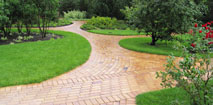
The type of paving stone paving is quite laborious and expensive, but this is compensated by its high quality and sophistication. An endless variety of patterns can be achieved by combining paving color and paving options.
Paving paths with concrete slabs
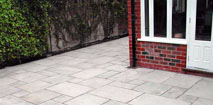
Concrete slabs are the most common and inexpensive coating method garden paths... The slabs themselves are made in various sizes, shapes and colors, up to imitation of other materials, for example, wood (deco concrete).

Contrary to the opinion that the concrete surface looks unattractive, there are many ways to decorate it. This is an imitation of brick or masonry using special cutting; facing of the monolith with tiles; finishing with pebbles, gravel, glass elements or shards ceramic tiles by pressing them into wet concrete; artificial aging of concrete; creating a rough surface; coloring.
Natural stone paving
![]()
Natural stone paving is suitable for any landscape style, whether natural, regular or modern type garden. This type of paving is one of the most durable and practical. Natural stone combined with different kinds paving. The combination of natural stone and brick looks especially noble. Along with flagstone, a well-known material is granite paving stones.
Wood paving
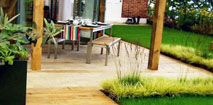
Currently, in the landscape design of the site, wooden paths and floorings are increasingly used. This type of paving may seem impractical to many, but it is not. Modern technologies allow you to make a special treatment in which the tree can serve you up to thirty years.
In addition to environmental benefits, wood paving also carries a functional load. This material is very often used for terraces, patios or paving around the pool.
In our climate, it is more advisable to use larch, which has incredible durability, even under harsh operating conditions. The reason lies in a large number a gum present in wood that protects it from decay.
In modern landscape design wood is used in various interpretations. This includes garden parquet, wooden sleepers, round hemp, cross-cuts of thick trees, rectangular wooden chocks and tree bark.
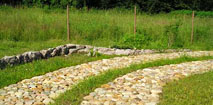 Cobblestone paving
Cobblestone paving
Cobblestone paving, especially when combined with wood decking, is best suited for Japanese landscaping. With the help of cobblestone, you can create a unique and graceful pattern.
Pebble or gravel paving
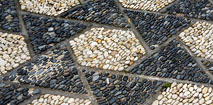
The main advantages of gravel paving of paths are its naturalness, versatility and reasonable cost. The gravel coating makes it possible to give the tracks any shape. To connect a pebble or gravel path with the main paving, it is decorated with stone slabs. In addition, such plates will prevent the displacement of small stones and prevent loose material from creeping.
Lawn grates

Lawn grates are a novelty in Russian gardens. They are used not only in the design of parking for cars, but also in the creation of green paths or garden lawns. In addition to the fact that the cells of the lattice can be seeded lawn grass, they can be covered with fine gravel. This will give you a durable gravel pad on your site.
Step paving
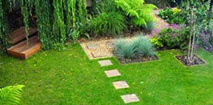
Step paving is typically used to create auxiliary walkways. For example, your path lies through an open lawn, in this case you should not "cross out" the space with monolithic lines, it will be much more appropriate to lay a step-by-step path. It is perceived visually much easier and does not divide the area that falls into your field of vision into parts.
The second point - have you noticed that we move around the garden a lot? It follows that there should be many paths in the garden. Now imagine that we have paved our entire path with monolithic concrete, stone or brick. Will we still have a space for contemplation, will we not be distracted here and there by the emerging "road ribbons"? In this case, it is necessary step tracks that will be barely noticeable against the background of a lawn or any other type of grass cover.
There is another reason why step paths in garden paving are necessary. The lanes give the direction of the gaze. The clearer the lines of the track, the more our gaze clings to them. But we all have on garden plots there are places that we would not like to show off. This can be either a secluded gazebo or an unsightly compost heap. And if continuous paths stretch to these places, then involuntarily your gaze and the gaze of your guests will rush exactly there.
Our company will gladly undertake the design of paths on the site, as well as the full cycle of their construction - from laying out works to paving with stones or paving slabs.
Commencement of work on the construction of tracks.
Taking in our hands the working documentation of the improvement project, we find a layout drawing, which reflects the location, dimensions and purpose of paving sites, as well as a drawing with pavement structures and a specification of paving materials.
All work related to paving and the arrangement of paths and sites must necessarily begin with marking the geometry and preparing the foundation for paving.
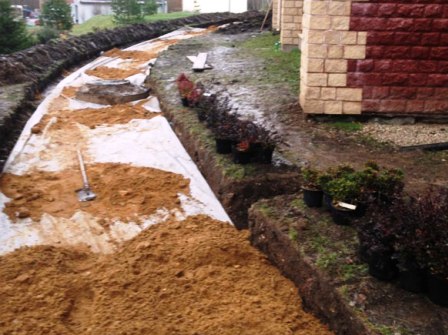
Decorative paving of paths makes the site more attractive and well-groomed, makes it possible to emphasize individuality with various materials and color contrasts.
Paving stones and paving slabs used by "Novaya Usadba" are selected specially adapted to different kinds physical activity. The use of rough paving slabs in paving paths is also convenient for the vehicle entrance area. Smooth and glossy, paving slabs can be laid freely in areas where vehicles will not travel.
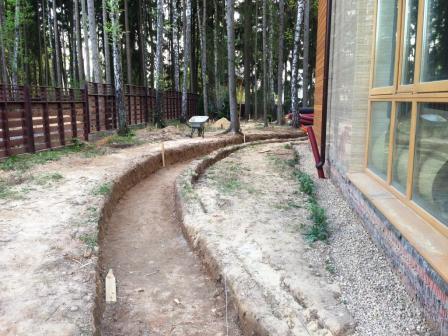

Choosing a base for paving with paving stones or tiles.
Concrete or not concrete?
"Cutting without waiting for peretonite", which in a loose interpretation means "concrete is obligatory and thicker" - is a fairly common opinion of seasoned builders.
Indeed, the Moscow region is characterized mainly by loamy and clayey soils. During seasonal soil movements, it is the concrete base that will be able to protect the track from destruction of the decorative top layer.
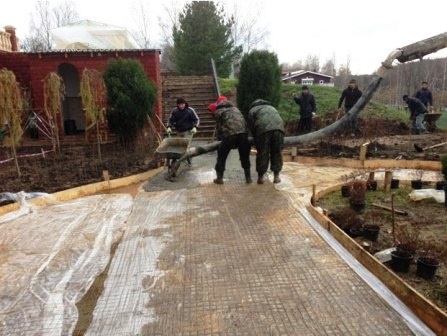
For coverings on which traffic is planned, usually a layer of concrete with a thickness of at least 20 centimeters with double reinforcement is poured onto a prepared sand and gravel cushion reinforced with geotextiles. Such a "pie" will not fall apart over time, does not form a rut, and will retain the original slopes for surface drainage.
And the footpath? Here - not everything is so simple.
If you want to use stone or paving slabs from 50 millimeters thick, but a compacted cushion of sand and gravel mixture can serve as a sufficient basis. AND no concrete! 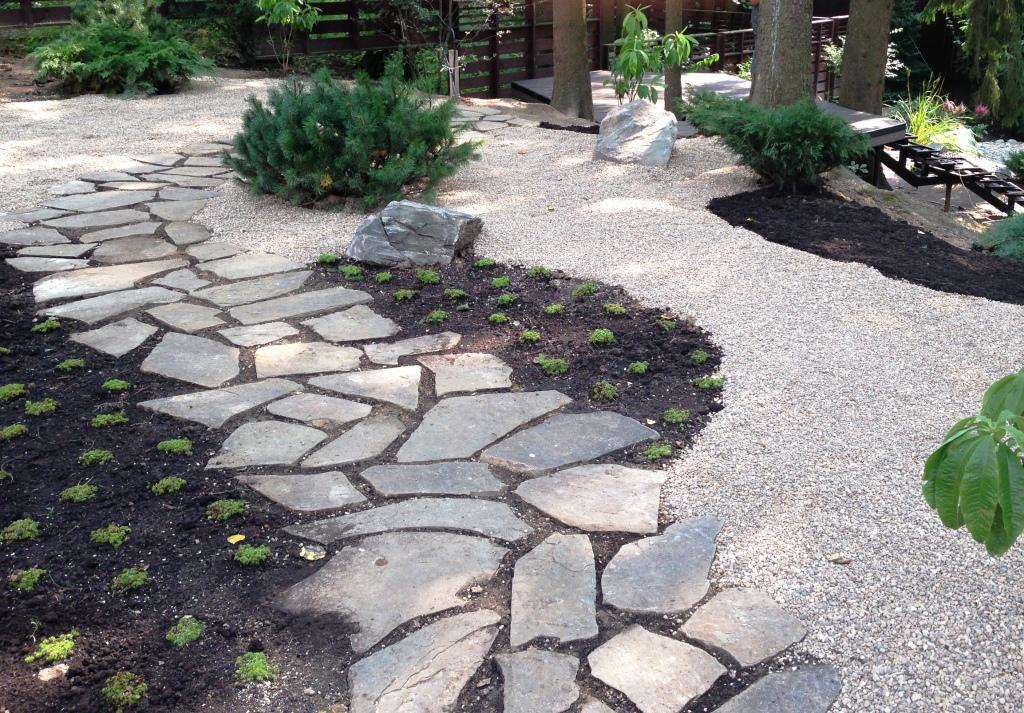
It is both more budgetary and much more environmentally friendly. Your plants will thank you so much for such a choice.
The only thing - do not skimp on the drainage layer and tamp the gravel base more carefully.
And of course, do not forget to separate the underlying layers with geotextiles. thus, the track will become stronger.
What material do we use for paving paths?
The building materials market represents many types of natural and artificial coatings.
- Granite screening.
Inexpensive, at the same time as simple and effective option... It is used for the construction of so-called "soft" walking paths. So that the path does not crumble, it is advisable to install a border around it. At the base of the track, ASG and other bulk materials are used. Keep in mind, however, that the top layer will spread throughout the entire area.
- A natural stone- granite, limestone, shale, sandstone, etc.
The durability of the sites fully justifies the resources expended. The most popular in the field of paving paths is sawn or chipped granite paving stones. It is shock, temperature, water and pressure resistant. The heat-treated surface is roughened and non-slip. The use of full-sawn granite paving stones will add solemnity to the garden.
The next most common material is a flat stone of various sizes. For small or thin (20-30 mm) stones, a concrete base is required. Thick and large stones will look great on walkways with a lawn between the slabs.
- Clinker paving stones (clinker bricks) or just clinker - natural thermally processed clay.
- Thermowood.
Resistant to destruction (mold, rot). Due to the attractive appearance It is widely used for creating embankments, open terraces, and sometimes for paving garden paths. We made the embankment cover from thermowood.
- Vibro-cast and vibro-pressed cement tiles.
The first type is distinguished by a huge selection of colors and shapes, but at the same time it is absolutely unstable to physical pressure. It is mainly used for paving garden paths. The second type of tile cannot boast the same variety, but it is resistant to temperatures and durability. It is in demand in the improvement of sites that will be affected by different weights (for example, parking lots). It is better to use small paving stones instead of large slabs to reduce pressure and avoid fractures.
- Wood-polymer composite (WPC)- a material that combines the best qualities of wood and plastic, resistant to any weather.
The variety of colors available allows this path to fit into any garden.
- Decorative concrete.
This material generally gives a huge space for creativity. Special stamps will help you create your own design.
Specialists of the "Novaya Usadba" company perform paving slabs on a turnkey plot, accelerating the process of landscaping the backyard area.
Unquestioning observance of the production technology of work by highly qualified specialists using quality materials, allows "Novaya Usadba" to count on an ideal result and relieves customers of the need to carry out repairs in the near future.
Track design includes several stages.
Firstly, the types of paving must be coordinated with the style of the garden so that the paved area and paths fit into the overall landscape. Based on the style of the garden, the design of garden paths is selected: material, outlines, texture of paths, color of material and paving pattern. So, in regular, Italian and Moorish gardens, paths on summer cottage should be of strict geometric shapes, with clear boundaries and the correct pattern.
In landscape and rural gardens, it is better to make paths winding, with smooth curves; the color of the paving should not violate the natural harmony, but connect the natural and man-made ones on the site. In a modern garden, on the contrary, sharp transitions of colors, their contrasting combinations, monochromatic pure colors, combinations of different textures are permissible.
The paths in the Japanese garden are not made straight; the color of the tracks in oriental gardens should not be bright and flashy, but on the contrary, calm, giving a feeling of comfort, warmth and harmony. Strict formal paths are good on large plots, while natural garden paths with smooth curves visually enlarge the plot, so they will look good in small gardens.
Projects of paths are applied to general drawings, they indicate the area of the paving, its type, buildings and plant compositions. The drawing must be drawn up in order to think over all the details and not redo anything in the future.
It is up to you to decide where to lay garden paths; in particular, it depends on the design of the entire garden and the objects located on it. Country paths act as a connecting element in the gardens, they connect the buildings and compositions on the site and give the garden completeness. Garden paths can be laid along the shortest path (between a house and a bathhouse or a summer kitchen, for example), or vice versa, you can make long walking alleys along which you can walk and enjoy the beauty of the garden; in this case, the garden paths are our guide to the area.
In addition to the style of the garden for paving garden paths, it is important to take into account the future load on them. Therefore, in different areas of the garden they use different material for garden paths. So, for example, in the utility area and where paths are most often used, the most durable paving materials should be used. The path leading from the gate to the house and the paths located in the front part of the garden should be wide and most beautifully decorated; with a combination of materials or with complex patterns. The technology for arranging garden paths, which are used less often, is much simpler; soft materials can be used for paving them.
Materials to the topic:

|
If you decide to build ... To read... | 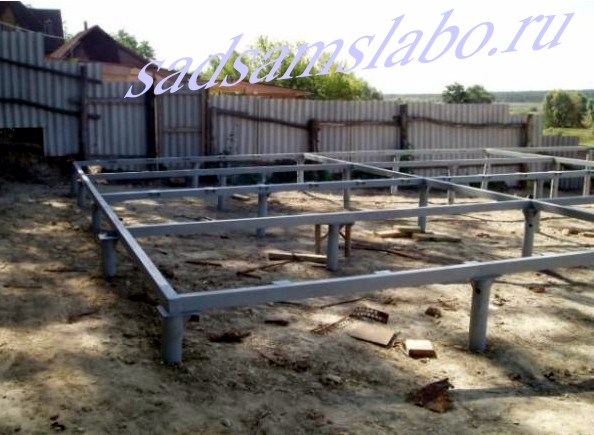
|
The main thing is a solid foundation ... To read... | We are building a bath ... To read... | |
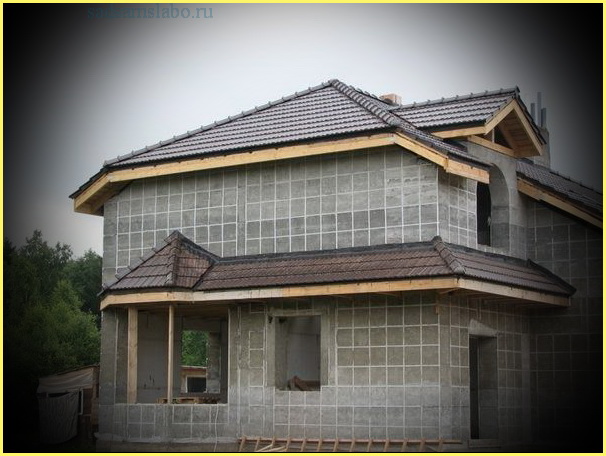
|
What to build walls from ... To read | 
|
We build a fence according to the rules .. To read... | 
|
So that the roof does not go ... To read... |
Paving on the site is used in important areas of the garden: a recreation area, a barbecue area or in a summer kitchen, patio, sports and playgrounds, where heavy and massive objects are installed, for example, benches or sculptural compositions, flowerpots, fountains (in order to avoid trampling the lawns ).
Planning a track
The first stage of the construction of the track, regardless of the surface, is the development of the route of movement along it. First of all, any path should lead somewhere - whether it be a barn, a decorative sculpture, or just a transition from one zone to another.
A straight or angled path will divide the garden into segments and give them a regular look, as opposed to the winding path that is characteristic of a more natural type of garden. It is also necessary to remember about the nature of the relief under the track. If the slope of the path, for example, is directed towards a house or other building, they will be flooded with rainwater.
Draw a large-scale plan, indicating the rise and fall of the ground level to make it easier to determine the direction of the paths and to avoid obstacles.
Be aware that the curved track line may appear differently on the plan than on the ground, where the curvature may be almost imperceptible. To visualize what the path will actually look like, bring the plan close to your eyes and look at the curve.
Marking the track
If you are going to fill a track entirely with concrete or tile it, you first need to mark it on the ground with a string stretched between the pegs (or with a long garden hose). it must be appropriate, and for two people to pass, a path about 92 cm wide is required.How to mark the bends of the tracks
A path that winds smoothly throughout the garden will beautify any design. She invites you to follow it to the end, promising nooks and crannies or something interesting around the next corner. The path should have smooth and wavy curves. If it turns too sharply, it will be difficult to drive, for example, a wheelbarrow. The route of such a track cannot be laid without a plan of the site to scale, as well as determine its dimensions, and also calculate the amount of materials required.Twine
Stretch one string, tied to a peg, along the longest side of the path where the path will be laid, and the other at right angles to the first across the width of the path. To locate the pointing pegs, place intermediate perpendicular lines along these lines at the same distance from each other, corresponding to the scale of your plan. Pull additional strings between the index pegs to create the shape drawn on the plan in the area; if the stakes and strings need to be removed to remove the fertile layer, replace them later, as they can serve as the basis of the formwork if necessary.
If you plan to fill the winding path with concrete, you will have to build an appropriate wooden formwork.It is better to use boards that are 2.5 cm thick or thinner (by nailing more pegs to them). The height of the formwork boards must correspond to the depth of the intended concrete casting. On them, you need to make cuts (up to the middle of the thickness) along their entire width at a distance of 12.5 cm, so that it is easier to bend them to give the required shape. Drive additional pegs into the ground to provide the desired formwork and give it more rigidity. The pegs are nailed from the outside of the formwork. For a smooth bend, the notches should be on the outside of the formwork, and for a steeper one, you need to make cuts on the inside of the bend so that the tree does not crack.
